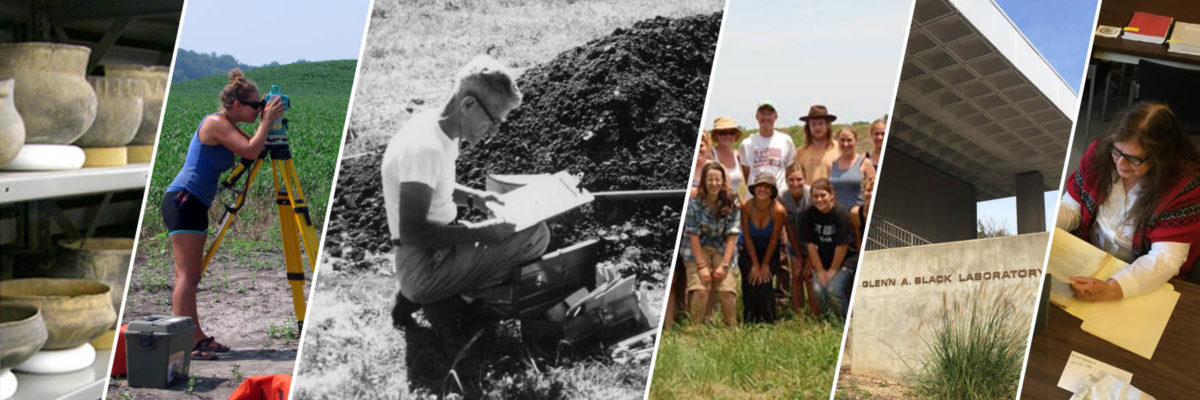by Amanda Pavot
Iiiiiitt’s that time again! Another post about the Angel Rehousing Project!
I suppose it’s about time I talk about why this Rehousing project is being done in the first place. Getting artifacts out of their old bags and boxes, and into newer, nicer ones is all well and good, but why are we doing it? The short answer is because we need to update the collection to modern curation standards, but what does that even mean?
The Rehousing is only part of an overall “Curating Angel” project. The big, main part, of course. Organizing associated records, like photographs, reports, and field notes, is also a part of this project. Eventually, most of the collection will be moved to a place that has better climate control. The goal is to update, organize, inventory, and digitize the collection of artifacts for easier access, to promote research. By updating the storage and documentation to modern standards, the collection can be better preserved and shared.
~Issues in Curation!~
A small example of some of the issues we and potential researchers have now:
Let’s say someone is interested in studying a selection of artifacts from the collection, and requests the opportunity to look at them. We go to find the artifacts by using location information from the database; they should be in a certain box. We go to that box only to discover that they aren’t there. They were either A) moved and no one left any notes or documentation saying when or where they were moved, or B) discarded, because in the past people discarded things for almost no reason. It can take a while to track down what happened to the artifacts, if we still have them, and in the meantime the researcher can’t do the research they want to do. Through rehousing and documenting, will have an updated and more accurate collections database and better accessibility.
The Save America’s Treasures Grant is what is making this project possible. You can find out more about the grant in a link below each of these posts. It was given for this project because Angel Mounds is a culturally and historically important site, so the preservation of its collection is vital. I might talk more about that in detail in a later post. But this grant is part of the reason I’m doing these blogs! Since it’s federally funded, it’s important for the public to know how this money is going to be used.
This past week, I’ve continued inventorying one of the Type Collection boxes. Type collections are used more often than the rest of the collection, so for ease of access a lot of the artifacts have already been sorted through and put into archival bags. But it’s been a long journey of “look up each individual artifact in the data base and make sure the label is correct, but also you sometimes have to try and decipher labels you can barely read.” This has also been a bit of a test run to see how long inventorying one box of the bulk type collection might take. If it sounds monotonous or tedious, it’s not a problem (for me, at least) because I like steady work and also sorting stuff.
Before I end this post, I’d like to take a moment to thank everyone who visited that GBL table at the Indiana University Powwow on April 6th! I wasn’t able to stay very long, but we met a lot people and had some good conversations! I had a great time and I’ll definitely be back next year!
In September 2018, the GBL was awarded a Save America’s Treasures grant to rehabilitate and rehouse about 2.8 million artifacts from Angel Mounds over the next 3 years. These grants are administered by the National Park Service in partnership with the Institute of Museum and Library Services.
This “Curating Angel” project will allow us to provide safe, long-term preservation of the artifacts and associated documentation from archaeological work at Angel Mounds and make these collections more accessible for research and education.
More about IMLS
The Institute of Museum and Library Services is the primary source of federal support for the nation’s libraries and museums. We advance, support, and empower America’s museums, libraries, and related organizations through grantmaking, research, and policy development. Our vision is a nation where museums and libraries work together to transform the lives of individuals and communities. To learn more, visit www.imls.gov and follow us on Facebook and Twitter.

(The views, findings, conclusions or recommendations expressed in this blog post do not necessarily represent those of the Institute of Museum and Library Services.)

